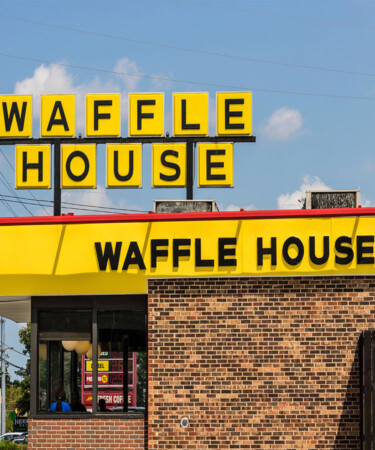For some, getting to enjoy a big, greasy, smorgasbord-style meal after a night of drinking is the best part of going out. But for those people, it’s become increasingly challenging to find somewhere to enjoy a late-night meal as the consequences of the Covid-19 pandemic continue to rear their ugly heads.
According to Yelp data, the number of establishments offering 24-hour meal service declined by 18 percent from 2020 to 2024. In New York — where 24-hour diners and restaurants flourished alongside a glittering, 20th century nightlife scene — the number of 24-hour restaurants fell 13 percent over the same period. Across the country in Los Angeles, a whopping 35 percent of 24-hour eateries have disappeared.
Of the 24/7 restaurants remaining, breakfast chains appear to be the most successful following pandemic-era closures and hour revisions. As CNN reports, roughly 50 percent of IHOP’s locations have returned to a 24-hour model, at least on the weekends. The situation is a little better at Denny’s, where 75 percent of the chain’s 1,600 locations are back to serving their loaded Original Grand Slam breakfasts 24-hours a day, seven days a week. Waffle House is faring the best out of the three chains: almost all 2,000 locations are operational 24/7 again.
However, not all diners and restaurants have had the same level of success. At Mi Tierra, an 80-year-old San Antonio Tex-Mex eatery known for its 24/7 service, all day, all night service has yet to resume, despite its popularity before the pandemic.
“A lot of our after midnight guests were mostly local — people going to dinners, weddings, and Chamber of Commerce events,” Pete Cortez, the owner of Mi Tierra, explained to CNN. “It was not uncommon to see people coming in tuxedos after midnight.”
Cortez believes that the lack of 24-hour operations is due to a change in guest mentality. Whereas guests used to have a few drinks and come in for a meal to soak up the alcohol before the pandemic, they now just want to go home. “There’s been a shift in the mentality,” he said. “People are saying ‘We already partied tonight. Do we really need to go to one more place?’”
Alex Barakos, general manager of Pete’s Kitchen in Denver, agreed. From the 1990s until 2020, Pete’s Kitchen operated 24/7. Now, the restaurant is only operational 24 hours a day on Fridays and Saturdays.
As he told CNN, “24/7 [service] relies on events like concerts and games. It’s all tied together. You have to really give someone a reason to go out right now. You have to give them an event.”
Part of the decreased demand for all-night dining is down to consumers just wanting to eat a little earlier. Last year, CNN reports that 10 percent of all diners were seated between 2:00 p.m. and 5:00 p.m., while that number was just 5 percent in 2019. Then there’s the preferences of younger drinkers to ponder. While it’s still too soon to determine the drinking habits of Gen Z considering much of the generation is under the age of 21, Gallup polling reveals that just 62 percent of adults under 35 say they drink alcohol, a 10 percent decrease from the same poll conducted 20 years ago.
Consumer demand and shifting preferences aside, higher labor and food costs are impacting the return of sunset to sunrise models. According to the Bureau of Labor Statistics, wages have increased by 29 percent since March 2020 while food costs are up a whopping 25 percent in the last four years. These higher expenses are compounded by the fact that staffing overnight shifts has never been an easy feat, and there are currently over 1 million vacant positions in the hospitality industry.
